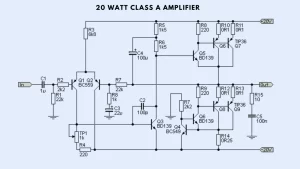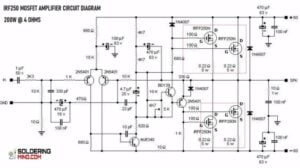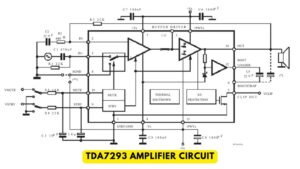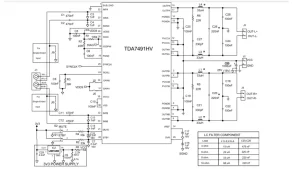To keep your amplifier safe you need to provide a Cooling fan to control the temperature building upon it while working. Continuous working of cooling fans consumes a lot of energy and also makes some disturbing noise. To overcome this problem we need to make a Temperature controlled fan using diode as the sensor. The fan turns on when the amplifier temperature reaches high and also turns off if the temperature goes down.
Introduction
In many parts of the world the room temperature is sufficient to cool the amplifier. But in places like Sydney, Australia, and many other areas the temperature is very high. It’s over 40 degrees celsius. This issue is the major problem if you are not using a cooling fan in an amplifier.
If you are using a small heat sink then you must attach a cooling fan to control the over temperature. The Class A amplifier produces more temperature than the class AB and class D amplifiers.
The sensor is a silicon diode, to sense the temperature. To amplify the signal the low cost op amp is used. The circuit can easily control the 12V DC fan. These fans usually takes around 200mA of power when it’s running. So a medium or small power transistor is enough to control the DC fan. I personally use a BD140 Transistor to control the DC fan. The transistor can handle 1A and 6.5 watt.
Circuit
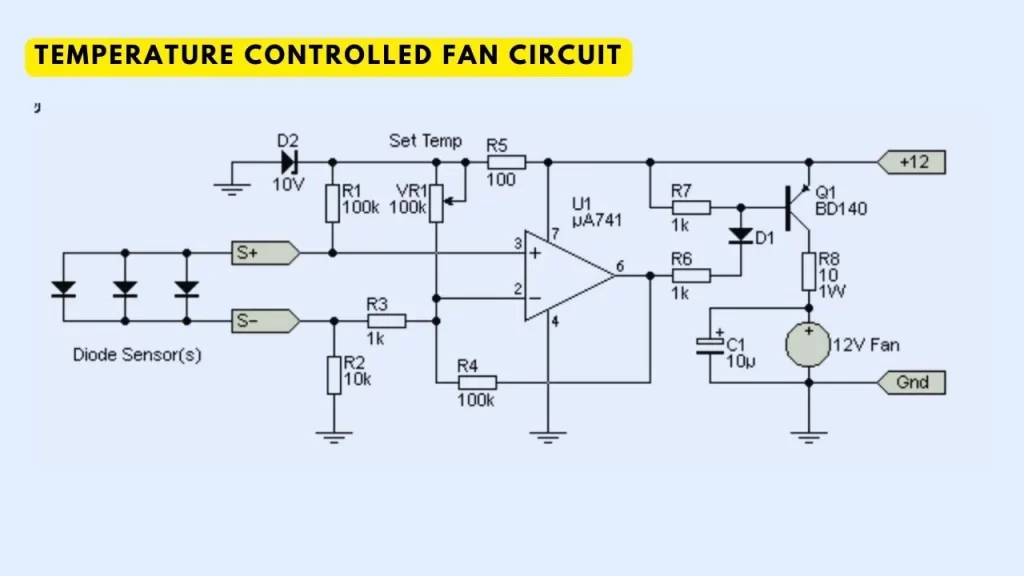
Working & Construction
The entire circuit will work on 12v DC power supply. THe power supply can be obtained from the amplifier power supply section. The diode used in this circuit is 1N4007 or similar. THe BD140 transistor needs a small heatsink on it. The transistor gets hot if there is no heatsink on it. The R7 1K resistor is connected to the positive supply voltage, this can turn off the transistor when there is no output from the op amp IC.
The temperature range is set by the VR1 pot, turn on the amp in normal temperature and let the amplifier make some heat, then after reaching the heat limit turn the VR1 and turn on the fan. This can be done only in the first time of setup, then close the amplifier cabin.
You can also use this circuit without the diode also, you need a soldering iron to test the circuit. If the working voltage goes to 8v the fan will not start working this makes a problem. So be careful with that, and maintain the correct voltage all the time.
You will Also Like
- Amplifier Overload Protection
- Clipping Indicator for Any Power Amplifier
- LM1875 10 Watt Power Amplifier
- 2SC5200 2SA1943 300 Watt Amplifier PCB
- Automatic power ON/OFF Switch Circuit for Amplifier

